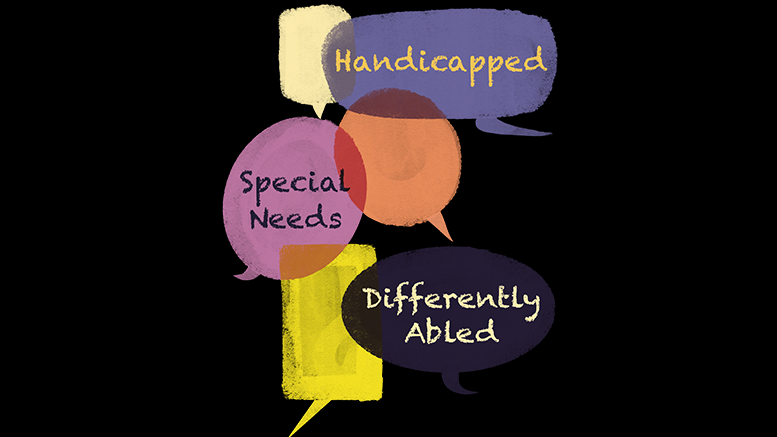“Handicapped,” “Special needs,” “accessibility-seeking,” or the newly popular “differently abled.”
These are just a few euphemisms — terms to soften or obscure a word deemed too blunt or unpleasant — for people with disabilities.
In a progressive world that strives to include and empower vulnerable groups including the disability community, there is something bitterly ironic about the fact that “disability” seems to leave a bad taste in so many mouths — enough to opt for (or, perhaps, invent) another descriptor altogether.
It is important to note, of course, that a good majority of those using euphemisms for the disability community do so with the best intent. Often, they are parents, allies or friends of those with disabilities — who truly support people with disabilities.
But the linguistic euphemisms that manifest from this support may result from attempts to separate people with disabilities from their disability. Disability, to them, is something negative, uncomfortable and unpalatable.
Avoiding the word “disability” doesn’t make a person any less disabled. It only reinforces the idea that an individual’s disability is something to be skirted around, politely ignored and never directly addressed or acknowledged.
Disability is not a bad word.
It’s simply a neutral descriptor for a certain range of diversities and differences — unique ways of interacting with and navigating the world. It is one stitch in a rich tapestry of human experience.
Not only does the use of the term disability “tell it like it is,” so to speak, but it also normalizes disabled experiences and helps erode negative connotations that still linger on the word.
That brings us to another facet of the modern movement toward inclusive terminology: the debate between person-first and identity-first language.
Person-first language emphasizes the person and views their disorder, condition or disability as secondary to who they are. In this mode of thought, disabilities are simply something a person “has” rather than what they are. “Person with cancer” or “person with diabetes” are examples of person-first language.
However, not all people prefer person-first language. In this view, person-first language might be seen as a shallow attempt to distance an individual from a trait deemed “wrong” or “undesirable,” reinforcing those negative connotations.
Identity-first language places the disorder, condition or descriptor first. One might refer to an individual as a “deaf person.”
Many of those in the autism community, for example, prefer identity-first descriptors, such as “autistic” or “autistic person.” They believe these terms appropriately express that autism is an inherent and meaningful part of their identity. In their view, “autistic” is a term that places their identity at the front and center rather than shunting it to the side as an adage or afterthought.
I believe there is merit to the argument for identity-first language.
Race, religion and nationality are arguably as much markers of identity as disability is, yet referring to someone as a “person with Asianness,” a “person with Christianness,” or a “person with Canadianness” might, to the ear, be bordering on absurd. Why is it different for disability?
The answer might be found in the broadness of disability. If we are to opt for identity-first language, “disabled person” might sound fine, but what of more specific disabilities? What is the identity-first equivalent to “person with a traumatic brain injury,” or “person with cystic fibrosis,” or “person with ADHD?” The reality is sometimes accurate, specific person-first descriptors just don’t exist.
And, if I might interject a purely subjective opinion, “ADHD people” doesn’t roll off the tongue very well.
Today, person-first language is generally considered a best practice in the disability community.
For many in the community, person-first language means hearing others acknowledge their humanity rather than simply referring to them by their diagnosis. The history of dehumanization of people with disabilities, whether in the healthcare, education or workplace sector, makes this especially important. It ensures their personhood is at the centre of their description. A healthcare professional stating, “I’m going to see the person with multiple sclerosis in bed nine” is, for obvious reasons, preferred to “I’m going to see the multiple sclerosis in bed nine.”
Of course, everyone in the disability community has unique experiences and perspectives, and it’s always best to ask what terms someone prefers if uncertain. In general, however, person-first language is considered a best practice in the disability community and is generally preferred. Ultimately, that is all that matters.
But all this begs the question: Why does it matter?
The simple answer is that language matters. Making a conscious effort to incorporate inclusive language helps challenge and dismantle system biases.
Changing our words changes our thoughts. Changing our thoughts changes our actions. Changing our actions changes our society.
So go ahead. Say “disability.”


